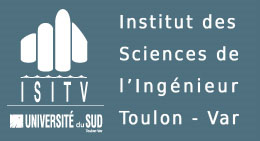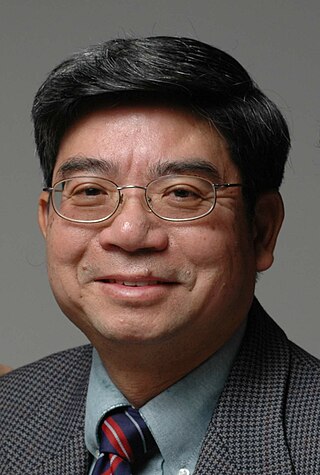
Naval architecture, or naval engineering, is an engineering discipline incorporating elements of mechanical, electrical, electronic, software and safety engineering as applied to the engineering design process, shipbuilding, maintenance, and operation of marine vessels and structures. Naval architecture involves basic and applied research, design, development, design evaluation (classification) and calculations during all stages of the life of a marine vehicle. Preliminary design of the vessel, its detailed design, construction, trials, operation and maintenance, launching and dry-docking are the main activities involved. Ship design calculations are also required for ships being modified. Naval architecture also involves formulation of safety regulations and damage-control rules and the approval and certification of ship designs to meet statutory and non-statutory requirements.

École Centrale de Nantes, or Centrale Nantes, is a grande école - a French engineering school - established in 1919 under the name of Institut Polytechnique de l'Ouest. It provides Bachelor, Graduate, Master, and PhD Programmes based on the latest scientific and technological developments and the best management practices.

The Norwegian Institute of Technology was a science institute in Trondheim, Norway. It was established in 1910, and existed as an independent technical university for 58 years, after which it was merged into the University of Trondheim as an independent college.

A remotely operated underwater vehicle (ROUV) or remotely operated vehicle (ROV) is a free-swimming submersible craft used to perform underwater observation, inspection and physical tasks such as valve operations, hydraulic functions and other general tasks within the subsea oil and gas industry, military, scientific and other applications. ROVs can also carry tooling packages for undertaking specific tasks such as pull-in and connection of flexible flowlines and umbilicals, and component replacement.

A ship model basin is a basin or tank used to carry out hydrodynamic tests with ship models, for the purpose of designing a new ship, or refining the design of a ship to improve the ship's performance at sea. It can also refer to the organization that owns and operates such a facility.

Manoeuvering thrusters are transversal propulsion devices built into or mounted to either the bow or stern of a ship or boat to make it more manoeuvrable. Bow thrusters make docking easier, since they allow the captain to turn the vessel to port or starboard side, without using the main propulsion mechanism which requires some forward motion for turning; The effectiveness of a thruster is curtailed by any forward motion due to the Coandă effect. A stern thruster is of the same principle, fitted at the stern. Sufficiently large vessels often have multiple bow thrusters and stern thrusters.

Marine engineering is the engineering of boats, ships, submarines, and any other marine vessel. Here it is also taken to include the engineering of other ocean systems and structures – referred to in certain academic and professional circles as “ocean engineering.”

In fluid dynamics, slosh refers to the movement of liquid inside another object.
In fluid dynamics and elasticity, hydroelasticity or flexible fluid-structure interaction (FSI), is a branch of science which is concerned with the motion of deformable bodies through liquids. The theory of hydroelasticity has been adapted from aeroelasticity, to describe the effect of structural response of the body on the fluid around it.

The Institut des Sciences de l'Ingénieur de Toulon et du Var, or ISITV, was a French public engineering school. It was located in the south of France, between Toulon and Hyères, on the French Riviera. In 2014, the school merged with Supméca to form a new engineering school called SeaTech.
John Nicholas "Nick" Newman is an American naval architect noted for his contributions to marine hydrodynamics. Together with David Evans, he initiated the International Workshop on Water Waves and Floating Bodies. He is also known for his contribution in the development of the wave–structure interaction code WAMIT. He is currently emeritus professor of Naval Architecture at Massachusetts Institute of Technology.

Professor Ernest Oliver (Ernie) Tuck was an Australian applied mathematician, notable for his sustained work in ship hydrodynamics, and for Tuck's incompressibility function.
The Ship and Offshore Structural Mechanics Laboratory (SSML) is a laboratory in the Department of Naval Architecture and Ocean Engineering of Pusan National University. The SSML develops methods useful for strength analysis and structural design of marine structures. The methods developed should be helpful for achievement of high performance of the structural system. The Laboratory has the facilities for numerical and experimental studies. This includes mechanical testing equipment and high-speed computers with non-linear finite element programmes.
The Resonance method of ice destruction means breaking sheet-ice which has formed over a body of water by causing the ice and water to oscillate up and down until the ice suffers sufficient mechanical fatigue to cause a fracture.

Ronald W. Yeung is a Distinguished Professor of Hydromechanics and Ocean Engineering at the University of California, Berkeley. He is one of the pioneers in the field of numerical ship hydrodynamics and marine renewable energy.
The Centre for Ships and Ocean Structures (CeSOS) is a research centre located at the Marine Technology Centre in Trondheim, Norway. The research centre's goal is to create fundamental knowledge about the design and operation of ships and ocean structures. The centre has been active since 2002, when it was established as a Centre of Excellence (CoE) by the Research Council of Norway and the Norwegian University of Science and Technology (NTNU). Although the financing period by the Research Council of Norway finished in 2012, research activities are still ongoing in 2013 and 2014, financed by external means.

Thor Inge Fossen is a Norwegian cyberneticist. Fossen received the MSc degree in Marine Technology (1987) and PhD in Engineering Cybernetics (1991) both from the Norwegian University of Science and Technology (NTNU). He is a Fulbright alumni and he pursued postgraduate studies in Aerodynamics and Aeronautics at the Department of Aeronautics and Astronautics of the University of Washington, Seattle (1989-1990). At age 28 he was appointed associated professor of guidance, navigation and control at NTNU and two years later he qualified as full professor. He has been elected member of the Norwegian Academy of Technological Sciences since 1998 and elevated to IEEE Fellow (2016) for his contributions to modeling and controlling of marine craft. Fossen is one of the founders of the company Marine Cybernetics (2002), which was acquired by DNV GL in 2014. He is co-founder of the company SCOUT Drone Inspection AS (2017) and he is involved in several new high-tech companies in Trondheim. He is currently co-director of the NTNU Center for Autonomous Marine Operations and Systems. He has made contributions in the areas of marine craft motion control systems, hydrodynamics, control theory, guidance systems and navigation.

Kaj Antero Riska is a naval architect and engineer with expertise in ice and arctic technology. He has written various publications about ice-going ships and icebreaker design, ice loads and ice management for arctic offshore floating platforms. He worked at Total S.A. as Senior Ice Engineer. He received the 2019 POAC Founders Lifetime Achievement Award.

R. Cengiz Ertekin is a professor of Marine Hydrodynamics and Ocean Engineering. He currently holds a guest professor position at Harbin Engineering University of China. He is best known for his contributions to the development of nonlinear water wave theories, hydroelasticity of very large floating structures (VLFS), wave energy, and tsunami and storm impact on coastal bridges. He is also the co-developer, along with Professor H. Ronald Riggs of the University of Hawaiʻi, of the computer program HYDRAN for solving linear fluid-structure interaction problems of floating and fixed bodies.
Susan Gourvenec is a British geoscientist who is Professor of Offshore Geotechnical Engineering and deputy director of the Southampton Marine and Maritime Institute at the University of Southampton. She was elected a Fellow of the Royal Academy of Engineering in 2022.














